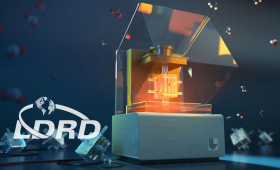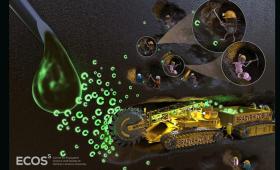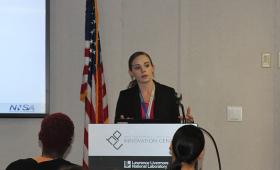The new Precision Diagnostic System has an advanced array of diagnostic tools that help researchers experiment with potential methods to increase laser performance
Science and Technology
in the News
Science and Technology
in the News
News Center

A new take on an additive manufacturing tool may be the key to capturing waste heat from manufacturing processes and converting it to electricity.

Livermore technology transfer and private-sector partnerships played an important role in fighting the COVID-19 pandemic.

A research team leverages the power of 3D printing to improve the performance of electrochemical reactors used to convert carbon dioxide (CO2) to useful energy sources, chemicals and material feedstocks.

Just a few bacterial groups found in ecosystems across the planet are responsible for more than half of carbon cycling in soils.

Livermore scientists have demonstrated a new geometry for a neutron source platform for the National Ignition Facility.

Livermore researchers have developed and are now installing high-quality fused silica debris shields to increase the National Ignition Facility’s shot rate.

Researchers have developed a new machine learning-based approach for modeling inertial confinement fusion experiments that results in more accurate predictions of National Ignition Facility shots.

Paper introduces the concept of cellular fluidics: a platform of unit-cell-based, three-dimensional structures—enabled by emerging 3D printing methods—for the deterministic control of multiphase flow, transport and reaction processes.

Livermore engineers have demonstrated aerodynamically integrated energy-efficient vehicle shapes for heavy vehicles.

